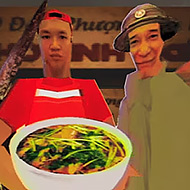Murder immerses players in a tense deduction scenario where every round challenges you to balance stealth, observation, and communication. Players adopt secret roles—either as the killer or as innocents trying to survive and uncover the truth. With dynamic maps, variable player counts, and evolving social cues, Murder consistently tests your ability to infer motives, take calculated risks, and act decisively under pressure in a shifting environment.
Main Roles and Objectives
In Murder, players are randomly assigned roles: the murderer seeks to eliminate innocents without being exposed, while innocents must survive and identify the killer. In some rounds, a detective role is introduced, granting special investigation powers. The interplay between these roles drives each round’s tension and strategy.
- Murderer aims to strike covertly, avoiding detection
- Innocents evade threats, gather clues, and work together
- Detective (when present) investigates and guides votes
- Reporting a body triggers discussion rounds and voting
Strategic Tips by Role
Success depends on tailoring your behavior to your role. If you’re the murderer, blending in is essential—create distractions and strike when most players are isolated. As an innocent, move with groups, observe patterns, and avoid falsifying information. Detectives must subtly piece together clues and lead others without becoming a target.
- As murderer: choose moments when players are distracted or spread out.
- As innocent: report unusual behavior immediately and provide accurate alibis.
- As detective: follow suspicious players discreetly and cross-reference sightings.
- In discussions: stay factual and avoid speculating without evidence.
Common Questions About Gameplay
Players often ask how to reveal guilt or innocence. Subtle repetitions, pacing of movement, and response tone under pressure all matter. Speaking up with calm logic rather than emotional claims helps build credibility. Meanwhile, murderers benefit from mimicking typical behavior and subtly shifting blame.
- Use casual movements and maintain group behavior to blend in
- Report strategically near discussion points to influence timing
- Track player comings and goings around time of death
- Vote based on observed behavior, not gut feeling
- Adapt as patterns change and other players change tactics
Murder delivers a pulse‑racing mix of stealth, logic, and social deduction. Mastering it means learning when to stay silent, when to speak up, and how to navigate shifting alliances each round.













 Fullscreen
Fullscreen






